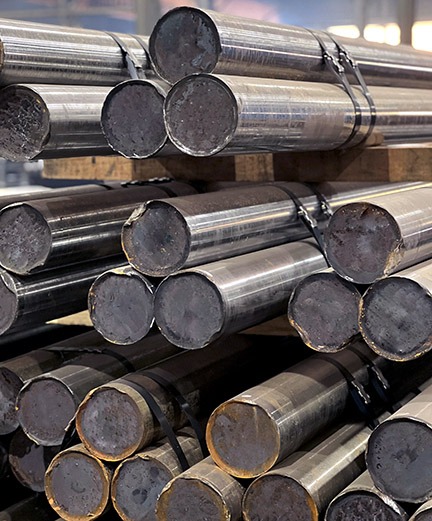The naming structure
Based on the SAE (Society of Automotive Engineers), steels that have a naming structure of 41XX are informally known as chromoly steel, or it is a chromium-molybdenum steel. These steels are usually much harder and tougher than normal carbon steel. Alloying elements allow the steel to be heat treated to obtain stronger physical properties. The last two digits are how much carbon is in the steel. In the case of 4140, there is .40% carbon and 4150 has a .50% carbon content.
These are both extra strong and hard alloys of steel, and are used in applications requiring higher performance than carbon steels can typically withstand.

Differences
Tensile strength: 4150 has a higher tensile strength, meaning it has a higher threshold for stress before breaking.
Ductility & workability: 4140 is more ductile, meaning it can be bent easier than 4150. It also can be used in cold working conditions while 4150 needs to be thermally treated before forming.
When to use
These types of steel are typically used in industries such as aerospace, defense, underground mining, oil and gas, or automotive. Some of the products you might use 4150 for are shafts, valves, or sprockets while 4140 may be used for crankshafts, gears, collars, and machinery parts.
There aren’t a ton of differences between 4140 and 4150, and it can get confusing knowing which one will be ideal for your project. Talk to a Clifton Steel representative to find out if 4140 or 4150 would be better for your needs.